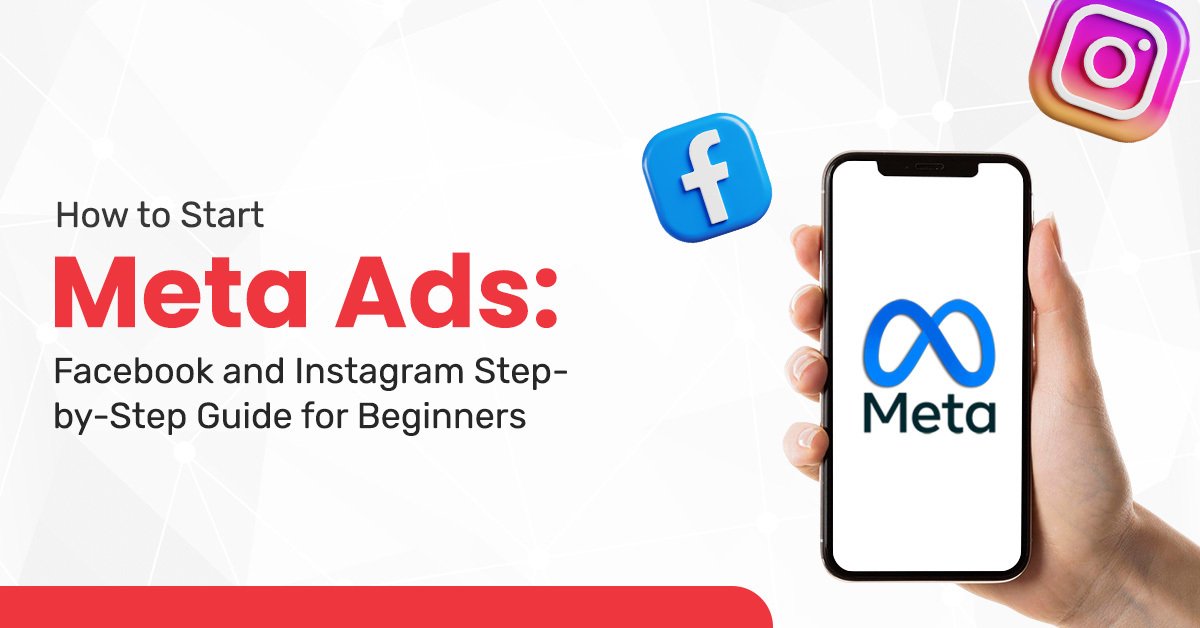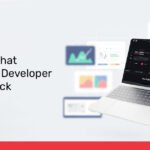Meta Ads is the combined ads platform for advertisers wanting to run ads on both Facebook and Instagram. With billions of active users, running paid ads on Facebook and Instagram can help any business grow, reach more customers, and deliver great results, even for complete beginners; e.g., FRD Studio flourished with the help of these tools. This article is a more formal, comprehensive, but still beginner-friendly primer for running Meta Ads on either Facebook or Instagram.
Meta Ads Intro
Beginning in 2025, Meta Ads Manager is the coordinated effort to launch ads on both Facebook and Instagram at once. With Ads Manager, advertising users design campaigns, find their target audiences, manage budgets, and obtain reporting all in one platform, thus making it feasible to work with performance marketing agencies companies in Gurugram.
Meta ads are accessible, flexible, and affordable, and they work for personal brands (via your own Facebook account), small businesses, e-commerce businesses, and content creators – it serves as a general guide to get you started.
Step 1: Create Your Meta Accounts
Get your Meta Business Account Set Up:
To get started, you either need to create or log into a Meta Business Suite Account (business.facebook.com). It will become the central dashboard for managing your ad accounts, pages, roles, and payment information for the ads.
Link your Facebook page and Instagram account:
– In order to run Facebook ads, you will need a Facebook business page; you can create a new one or link a current page.
– In order to run Instagram ads, link your Instagram professional (business) account to the Meta Business Suite. This allows access to Instagram placements from Meta Ads Manager.
– Set Up Your Ad Account:
In the Meta Business Suite, you will find”Business Settings” in the left column when selecting “Ad Accounts.” After completing the ad account application, you fill out your name, business information, and payment information. You should even be able to set the time zone and currency, so be sure to give “access and permissions” when required.
Step 2: Install Meta Pixel (Optional but Powerful)
Meta Pixel is a very small piece of code you place on your website. It tracks actions taken by visitors , helps you measure the results of your Facebook/Instagram ads, and optimizes targeting. It is optional, but we highly recommend implementing it for continued data collection and retargeting.
– Go to “Data Sources” → Pixels → Add Pixel.
– You can install it manually or use some integrations (like for WordPress or Shopify).
– You will also need to verify your domain and set up events as deemed necessary .
Step 3: Open Meta Ads Manager
Go to the ‘Ads Manager’ section located in the Meta Business Suite. ‘Ads Manager’ will become the hub for your ad creation, publication, and analysis.
Step 4: Select Your Campaign Objective
Each advertising campaign starts with selecting an objective. Objectives dictate how Meta optimizes your ad delivery according to various need states.
-Common Objectives:
– Brand Awareness – Try to reach as many people as possible so they are aware of your business.
– Traffic – attract people to your website or app.
– Engagement – Generate likes, comments, shares, or responses to events.
– Leads – Capture information from audiences via forms or Messenger .
– Sales/Conversions – Encourage people to purchase from your website, sign up, or download something.
Step 5: Identify Your Audience
With the new and improved targeting options on Meta, you will know exactly who is going to find your ad-and who isn’t.
Some targeting options to include are:
– Demographics ( e.g., Age, Gender, Location).
– Interests ( e.g., Shopping and Store Visits, Hobbies, Pages followed) .
– Behaviors ( e.g., Online behavior , Shopping behaviors , Traveling behaviors ).
– Custom audiences ( e.g., someone who has visited your website or is on your client list) .
– Lookalike audience – someone who shares similar characteristics to your most loyal customers.
Make sure you understand your target customer well so that you can target correctly! The more effective your targeting, the more return and ROI you will get.
Step 6: Budget and Schedule
Advertisers have to deal with budgets to know how much money is spent and how long the ad will be active .
Budget options are:
– Daily budget – The total amount of money you are willing to spend on your ad per day.
– Lifetime budget – The amount you will spend on your entire campaign.
-Some schedule options are:
– Rolling: The ad runs continuously until it is switched off.
– Fixed schedule: Both a start date and an end date are programmed for the ad.
It’s better to start with a small amount and raise it when you have figured out what is working best. At any time, you can change scheduling and budget decisions in Ads Manager, which can help make the agency an affordable design agency in Gurugram.
Step 7: Placements of Ads
Users can choose where ads appear on the platform using Meta Ads Manager.
The most optimal placements will show ads when and where most people are using their mobile devices.
Automatic Placements: Automatic placements are probably the most entry level option-Meta will auto-run ads on Facebook, Instagram, Messenger, stories, and feed, based on performance.
Manual Placements: For more experienced users , you can also select specific placements like the news feed on Facebook, Stories or Reels on Instagram, and apps or sites on the Audience Network.
Automatic placements can reach more people and tend to be easier to manage ; you can always narrow it down later with manual placements.
Step 8: Build Out Your Ad Creative
This is where the ad creative aspect of your campaign comes into play and helps your messaging stand apart from everyone else.
Ad Formats:
– Single Image: just one picture.
– Video: short, fun video content.
– Carousel: one ad with multiple images/videos.
– Collection: a product showcase for e-commerce campaigns.
– Copywriting Tips: Main Text A: this is where your main text goes, and it should be short and benefit-driven. Headline: this text should also be short, but grab a person’s attention. Description: this can be an optional place where you can share additional information.
Call to Action (CTA): this is where you will indicate to the person exactly what you would like them to do, i.e. , “Shop Now,” “Learn More,” or “Sign Up. “
Make sure to use high-quality (from a visual standpoint) and clear visuals. Use fun colors and create a focused message based on your goal. You want to limit messaging on visuals because Meta will limit your reach when content displays too much text on visuals, which can make it the top design agency in Gurugram.
Step 9: Review and Publish Your Ad
Before you hit launch, it’s time to review all of your settings:
→ Your campaign objective matches your business goals.
→ Your audience is correctly defined.
→ The ad creative is visually appealing, with clear copy and a call to action.
→ Your budget and schedule are appropriate.
→ Your pixel and tracking options are configured and enabled.
Once you are satisfied you are happy with your ad and you are all set, you are able to preview the ad, confirm it is accurate, and publish. The ad will then be sent to Meta to be reviewed for ads policies. This generally takes your ad from a couple of minutes to a few hours to review edgewise.
Step 10: Performance Tracking and Optimization
Now that your ad is running, you should track and monitor your ad and optimize it for a successful ad.
Metrics to look for:
→ Reach: The total number of people who saw your ad
→ Clicks: The number of times people clicked on your ad or link
→ Conversions: How many people completed the desired action (made a purchase, signed up , etc.)
→ Cost per action: How much it costs for each conversion.
Tips for beginners:
→ Google A/B testing : use different creatives, copy, or audiences and test the metrics to find what works better for you.
→ Change your budget/schedule or placements if you need to. The Ad Manager makes this easy to change.
→ Don’t monitor your results day-to-day. Instead, wait at least a week before looking at the data again.
Common Mistakes to Avoid
– Bad targeting: Have you been burning your budget with not even a click? This is often the outcome of broad targeting that does not fit with the message you are presenting or the product you are promoting.
– Messy creatives: If you think the design looks messy, your audience will too! Clearer is better for messaging.
– Pixel not installed: If you did not install the Meta Pixel, you will have limited data to measure performance.
– Wrong objectives: If a goal for the campaign is misaligned with a marketing objective, it is guaranteed to be unsuccessful.
– No optimization: If you have not used the data given to optimize your ad sets or audience, you have seriously missed growth potential.
Pro Tips for Growing Fast
– Always continue testing multiple versions of the ads to keep discovering what converts best for your audience.
– Start retargeting ads for persons who have already entered your audience.
– Make sure to pay serious attention to Meta’s design guidelines, specifically with image sizes and text limitations.
– Over time, use audience insights to hone targeting.
– Because the platforms change so frequently, be sure to review the help pages from Meta about every other day.
Conclusion
Meta Ads serve as an effective, easy-to-understand, and scalable advertising platform on Facebook and Instagram for beginners. By following these 10 straightforward steps to prepare the first account, find the audience, develop the creatives, and optimize, anyone looking to find growth through “Ads” can navigate through posters, videos, and invitations, and start generating real growth in the next few weeks.
If you continue to review, learn, and exhibit creativity, Meta Ads can yield results for your brands, businesses, and creators in the competitive digital growth space in 2025.







